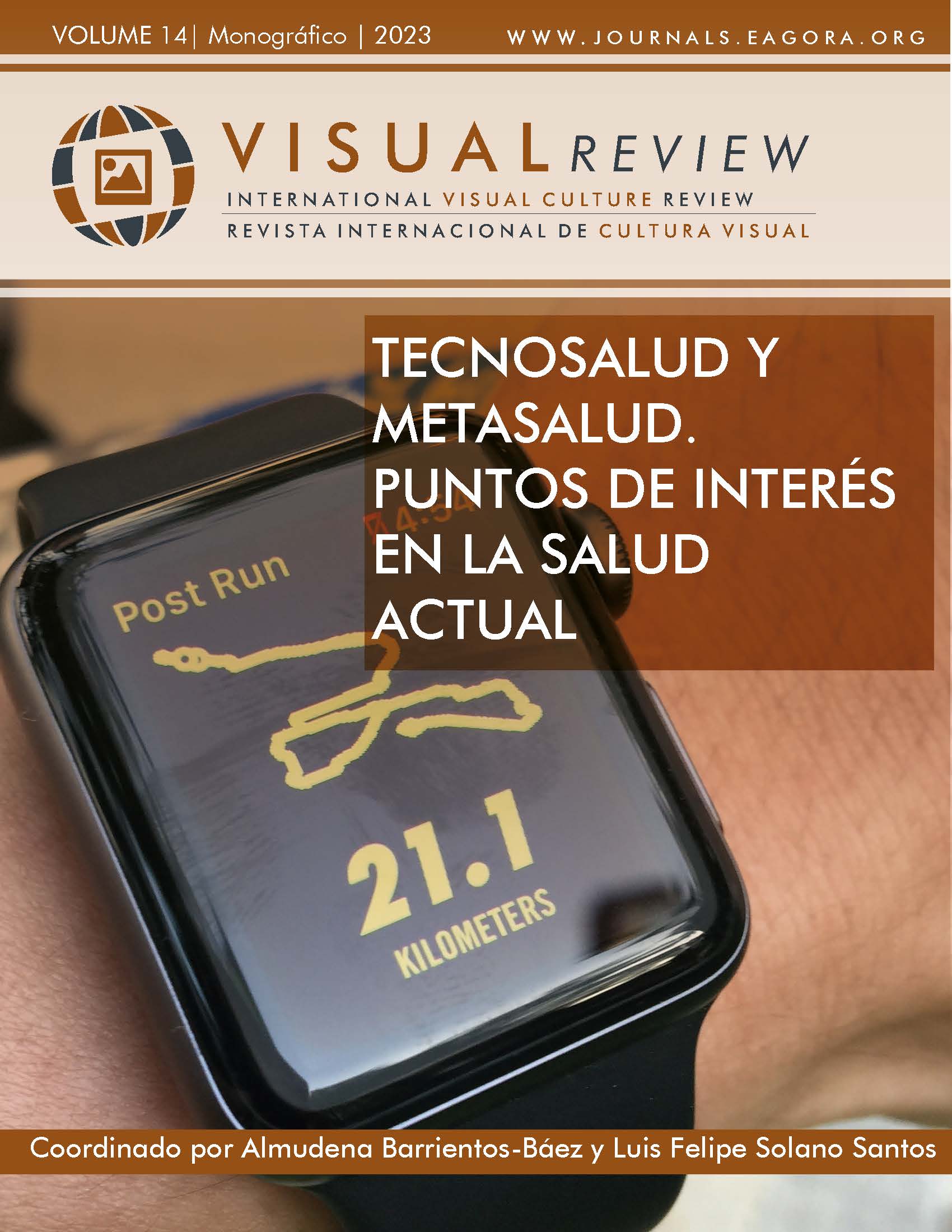Self-Efficacy, Empowerment, Anxiety And Sense Of Coherence In Nurse, México
DOI:
https://doi.org/10.37467/revvisual.v10.4613Keywords:
Self-efficacy, Empowerment for health, Anxiety, Sense of coherence, Nursing staff, Health institutions, Occupational healthAbstract
Nursing work situations have developed in an environment of uncertainty, affecting their mental health. A descriptive correlational study was carried out that allowed determining the association of self-efficacy, empowerment, and anxiety with a sense of coherence in 174 nurses from health institutions in Sonora, Mexico. 50.9% had high self-efficacy, 54.3% high empowerment, 52.6% low anxiety and 50.3% low sense of coherence. There was a significant statistical association in self-efficacy, empowerment, anxiety with a sense of coherence with p=0.01. It is essential to establish strategies to preserve mental health in the nursing staff of health institutions.
Downloads
Global Statistics ℹ️
|
1225
Views
|
1226
Downloads
|
|
2451
Total
|
|
References
Agüero, M. M., Pérez, F. T., & Troz, P. I. (2022). Principales patologías psíquicas que generó el estrés laboral durante la pandemia de Covid-19 en el personal de salud. Revista Médica Sinergia, 7(4), e793. https:// doi.org/10.31434/rms.v7i4.793 DOI: https://doi.org/10.31434/rms.v7i4.793
Basínska, M. A., Andruszkiewicz, A., & Grabowska, M. (2011). Nurses’ sense of coherence and their work-related patterns of behaviour. IJOMEH, 24(3), 256-266. https://doi.org/10.2478/S13382-011-0031-1 DOI: https://doi.org/10.2478/s13382-011-0031-1
Burguillos, P. A., Acosta, C. M. (2019). Sentido de coherencia y fobia social: Un estudio descriptivo. International Journal of Developmental and Educational Psychology, INFAD Revista de Psicología, 1(3), 151-158. https:// revista.infad.eu/index.php/IJODAEP/article/view/1534/1336 DOI: https://doi.org/10.17060/ijodaep.2019.n1.v4.1534
Burguillos, P. A. (2014). Sentido de coherencia e inteligencia emocional: efecto en la ansiedad social de estudiantes universitarios. Revista Internacional de Psicología del Desarrollo y la Educación, 4(1), 295-302. https:// www.redalyc.org/articulo.oa?id=349851787032 DOI: https://doi.org/10.17060/ijodaep.2014.n1.v4.615
Cabrera-Sandoval, J. (2005). El empoderamiento de enfermería y las organizaciones inteligentes. Colegio de Enfermeras de Costa Rica. Enfermería en Costa Rica, 19-25. https://www.binasss.sa.cr/revistas/ enfermeria/v30n1/art4.pdf
Cadena, E. J. (2015). Análisis reflexivo del empoderamiento de la enfermería mexicana. Revista Mexicana de Enfermería Cardiológica, 23(1), 42-46. https://www.medigraphic.com/pdfs/enfe/en-2015/en151g.pdf
Cadena, E. J., & González, O. Y. (2017). El cuidado de enfermería en pacientes con riesgo cardiovascular sustentado en la teoría de Nola J. Pender. Investigación en Enfermería: Imagen y Desarrollo, 19(1), 107-121. https:// www.redalyc.org/articulo.oa?id=145249416008 DOI: https://doi.org/10.11144/Javeriana.ie19-1.ecep
Cámara de Diputados del H. Congreso de la Unión. (2021). Ley General de Salud. Secretaria General. México. https://www.diputados.gob.mx/LeyesBiblio/pdf_mov/Ley_General_de_Salud.pdf
Cantor-Cruz, F., McDouall-Lombana, J., Parra, A., Martin-Benito, L, Paternina, Q. N., & González-Giraldo, C., et al. (2021). Cuidado de la salud mental del personal de salud durante Covid-19: Recomendaciones basadas en evidencia y asesoría de expertos. Revista Colombiana d Psiquiatría, 50(3), 225-231. https://www. ncbi.nlm.nih.gov/pmc/articles/PMC7955936/ DOI: https://doi.org/10.1016/j.rcp.2021.02.007
Cruz, A. C., Ángelo, M., & Santos, B. P. (2017). Escala de autoeficacia para el establecimiento de buenas relaciones con las familias en ambientes neonatales y pediátricos. Rev Esc Enferm USP, 51, e03222. https://www. scielo.br/j/reeusp/a/GzT6mcHk8dPmWmz9JH8cr6R/?lang=es&format=pdf
Cruz-Altamirano, J., & Herrera-Sarmiento, S. (2018). Personalidad y ansiedad estado rasgo en enfermeras de un hospital nacional. CASUS Revista de Investigación y Casos en Salud, 3(3), 145-154. https://doi. org/10.35626/casus.3.2018.78 DOI: https://doi.org/10.35626/casus.3.2018.78
Díaz, T. M., Juarros, O. N., García, M. B., & Sáez, G. C. (2017). Estudio de la ansiedad del profesional de enfermería de cuidados intensivos ante el proceso de la muerte. Enfermería Global, 16(45), 246-265. https://dx.doi. org/10.6018/eglobal.16.1.232221 DOI: https://doi.org/10.6018/eglobal.16.1.232221
Durante, M., Jennifer, H. J., & Fajardo, G. (2020). El rol de los profesionales de la salud ante la crisis sanitaria.
Programa Universitario de Bioética. Humanidades UNAM. https://tinyurl.com/mpu83u56
Eriksson, M., & Mittelmark, M. (2017). The sense of coherence and its measurement. En: Mittelmark MB, Sagy S, Eriksson M, et al, editors. The handbook of salutogenesis. Ed.Switzerland: Springer International, Pp. 99-106. DOI: https://doi.org/10.1007/978-3-319-04600-6_12
Escobar-Castellanos, B., Cid-Henríquez, P., Sáez-Carrillo, K., Vargas, M. R., & Villegas, C. M. (2020). Validación del instrumento de percepción de empoderamiento (IPE) en estudiantes universitarios. Index Enferm, 29(4), 235-239. http://scielo.isciii.es/scielo.php?script=sci_arttext&pid=S1132- 12962020000300010&lng=es
European School health Education. (2020). La ansiedad en el personal de enfermería. ESHE. https://www. esheformacion.com/blog/5/la-ansiedad-en-el-personal-de-enfermeria
Fernández, M. M., Mayo, C. L., García, M. M., Liébana, P. C., Fernández, G. D., Vázquez, C. A. (2014). Sentido de coherencia y salud percibida en alumnos universitarios de ciencias de la salud. Asociación de Enfermería en Salud Mental. https://tinyurl.com/32uxxcx8
Fernández-Martínez, E., Liébana-Presa, C., & Morán, A. C. (2017). Relación entre el sentido de coherencia y el cansancio emocional en estudiantes universitarios. Psychology, Society, & Education, 9(3), 393-403. https://ojs.ual.es/ojs/index.php/psye/article/view/861/1026 DOI: https://doi.org/10.25115/psye.v9i3.861
Gámez-Salgado, J., Domínguez-Salas, S., Romero-Martín, M., Ortega-Moreno, M., García-Iglesias, J., & Ruiz-Frutos, C. (2020). Sense of coherence and psychological distress among healthcare workers during the COVID-19 pandemic in Spain. Sustainability, 12(17), 6855. http://dx.doi.org/10.3390/su12176855 DOI: https://doi.org/10.3390/su12176855
Hernández Falcón, J., Jiménez Mendoza, A., & Pérez Cabrera, I. (2020). La comunicación espectral en el cuidado de enfermería y los riesgos de la virtualidad. Revista de Comunicación y Salud, 102, 625–635. https://doi. org/10.35669/rcys.2020.10(2).625-635 DOI: https://doi.org/10.35669/rcys.2020.10(2).625-635
Herrero, S. H., Caserío, C. S., Morante, S. M., Montero, M. M., De la Cruz, B. J., & Pallás, A. C. (2012). Estudio de los niveles de ansiedad en los profesionales de una unidad neonatal. Anales de Pediatría, 77(1), 22-27. https://tinyurl.com/6ez26779 DOI: https://doi.org/10.1016/j.anpedi.2011.11.019
Lani, J. (2010). General Self-Efficacy-Schwarzer (GSES). Statistics solutions. http://www.statisticssolutions.com/ general-self-efficacy-schwarzer-gses/
Linnen, D. (2014). Empoderamiento enfermero: argumentos a favor. Nursing, 31(4), 53-56. http://dx.doi. org/10.1016/j.nursi.2014.08.015 DOI: https://doi.org/10.1016/j.nursi.2014.08.015
Llor, L. J., Seva, L. A., Díaz, A. J., Llor, G. L., & Leal, C. C. (2020). Burnout, habilidades de comunicación y autoeficacia en los profesionales de urgencias y cuidados críticos. Enfermería Global, 19(59), 68-92. https://dx.doi. org/10.6018/eglobal.381641 DOI: https://doi.org/10.6018/eglobal.381641
Lozano-Vargas, A. (2020). Impacto de la epidemia del coronavirus (Covid-19) en la salud mental del personal de salud y en la población general de China. Rev Neuropsiquiatr, 83(1), 51-56. http://www.scielo.org.pe/ scielo.php?script=sci_arttext&pid=S0034-85972020000100051&lng=es. http://dx.doi.org/10.20453/ rnp.v83i1.3687 DOI: https://doi.org/10.20453/rnp.v83i1.3687
Malagón, A. M., Juvinyá, C. D., Bonmatí, T. A., Fernández, P. R., Bosch, F. C., & Betran, N. C., et al. (2012). Sentido de coherencia de las enfermeras y validación del cuestionario SOC-13. Metas enferm, 15(9), 27-31. https:// tinyurl.com/mr25y5ds
Malagón-Aguilera, M., Fuentes-Pumarola, C., Suner-Soler, R., Bonmatí-Tomàs, A., Fernández, P. R., & Bosch-Farré, C. (2012). El sentido de coherencia en el colectivo enfermero. Enfermería Clínica, 22(4), 214-218. https:// doi.org/10.1016/j.enfcli.2012.06.002 DOI: https://doi.org/10.1016/j.enfcli.2012.06.002
Malagón-Aguilera, M., Suñer-Soler, R., Bonmatí-Tomas, A., Bosch-Farré, C., Gelabert-Vilella, S., & Juvinyà-Canal, D. (2019). Relationship between sense of coherence, health status, and work engagement among nurses. Journal of Nursing Management, 12848. http://dx.doi.org/10.1111/jonm.12848 DOI: https://doi.org/10.1111/jonm.12848
Mantas, J. S. (2017). Sentido de coherencia, resiliencia y salud mental positiva en los profesionales del sistema de emergencias médicas. [Tesis doctoral]. España; Universitat de Girona. https://tinyurl.com/c7fueyhu
Martín, A. E., & Pacheco, T. T. (2021). Impacto psicológico en profesionales del ámbito sanitario durante la pandemia Covid-19. Cuadernos de Crisis y Emergencias, 71-89. https://www.cuadernosdecrisis.com/ docs/2021/numero20vol1_2021_impacto_psicologico.pdf
Masanotti, G. M., Paolucci, S., Abbafati, E., Serratore, C., & Caricato, M. (2020). Sense of coherence in nurses: A systematic review. Int. J. Environ. Res. Public Health, 17(6), 1861. https://www.mdpi.com/1660- 4601/17/6/1861 DOI: https://doi.org/10.3390/ijerph17061861
Ministerio de Salud. (2020). El reto del covid-19 para los sistemas de salud en el mundo. Ministerio de Salud y Protección Social. https://tinyurl.com/34skysft
Montenegro, A. A. (2016). Burnout y sentido de coherencia en enfermeras de la unidad de hospitalización pediátrica. [Tesis de pregrado]. Universidad Católica del Perú; Lima. https://tesis.pucp.edu.pe/ repositorio/handle/20.500.12404/7503
Moriel-Corral, L., Bonilla-Loyo, E., Hernández-Hernández, H., & Pizarro, N. (2012). Empoderamiento de enfermería como profesión y sujeto social: caso Chihuahua. Revista de Comunicación de la SEECI, (27), 30-38. https:// www.redalyc.org/articulo.oa?id=523553230003 DOI: https://doi.org/10.15198/seeci.2012.27.30-38
Montagud, R. N. (2021). Escala de ansiedad estado-rasgo: Qué es y cómo se usa. Psicología y Mente. https:// psicologiaymente.com/psicologia/escala-ansiedad-estado-rasgo
Olivari, M. C., & Urra, M. E. (2007). Autoeficacia y conductas de salud. Ciencia y enfermería, 13(1), 9-15. https:// dx.doi.org/10.4067/S0717-95532007000100002 DOI: https://doi.org/10.4067/S0717-95532007000100002
Onofre, S. M., Rodríguez, G. M., Jaramillo, V. M., Salazar, M. D., Hernández, M. M., & Luna, H. L. (2021). Ansiedad, depresión y estrés en prestadores de servicios de salud ante el covid-19. Ciencia Latina Revista Científica Multidisciplinar, 5(5), 6837-6857. https://doi.org/10.37811/cl_rcm.v5i5.804 DOI: https://doi.org/10.37811/cl_rcm.v5i5.804
Organización Internacional del Trabajo. (2021). Covid-19 y el mundo del trabajo. https://www.ilo.org/global/ topics/coronavirus/lang--es/index.htm
Organización Internacional del Trabajo. (2016). Estrés en el trabajo. Un reto colectivo. https://www.ilo.org/ public/libdoc/ilo/2016/490658.pdf
Organización Mundial de la Salud. (1998). Promoción de la salud. Glosario. WHO Int. https://tinyurl.com/34hypw3z Ortega. J., & González, J. M. (2020). La enfermería en tiempos de la covid-19: un relato de dos enfermeros de práctica avanzada desde el frente de la pandemia. Organización Panamericana de la Salud. https://tinyurl.com/37rbnwxy
Ortiz-Granja, D., Jayo-Suquillo, L., & Ramos-Galarza, C. (2020). Estructura factorial del sentido de coherencia y su relación de apego. Aval. Psicol, 19(3), 298-309. http://dx.doi.org/10.15689/ap.2020.1903.17132.08 DOI: https://doi.org/10.15689/ap.2020.1903.17132.08
Pallasco, R. W., Noroña, S. D., & Vega, F. V. (2022). Estrés laboral en personal de salud de atención primaria durante la pandemia covid-19, Revista Ocronos, V(2), 43-48. https://revistamedica.com/estres-laboral-personal- atencion-primaria-pandemia/
Pérez-Fuentes, M., Simón-Márquez, M., Molero-Jurado, M., Barragán-Martín, A., Martos-Martínez, A., & Gázquez-
Linares, J. (2018). Inteligencia emocional y empatía como predictores de la autoeficacia en técnicos en cuidados auxiliares de enfermería. Revista Iberoamericana de Psicología y Salud, 9(2), 75-83. https:// www.rips.cop.es/pdf/art162018e16.pdf DOI: https://doi.org/10.23923/j.rips.2018.02.016
Piqueiras Conlledo, P., De Marchis Picciol, G. ., & Cuesta Díaz, V. (2020). Análisis del contenido publicado en YouTube, Facebook e internet sobre vacunas y anti vacunas. Revista de Comunicación y Salud, 101, 67– 90. https://doi.org/10.35669/rcys.2020.10(1).67-90 DOI: https://doi.org/10.35669/rcys.2020.10(1).67-90
Ramírez-Carrasco, D., Escobar-Soler, C., Ferrer-Urbina, R., Caqueo-Urízar, A., & Gallardo-Peralta, L. (2022). Rasgo o estado: Efectos de la temporalidad de la ansiedad sobre medidas de bienestar. Psykhe (Santiago), 31(1), 1-8. https://dx.doi.org/10.7764/psykhe.2019.22203 DOI: https://doi.org/10.7764/psykhe.2019.22203
Reyes-López, V., Landeros-Olvera, E., Galicia-Aguilar, R., & Lozada-Perezmitre, E. (2021). Acute stress on the nursing staff exposed or recovered from covid-19. Index de Enfermería, 30(4), 303-307. https://tinyurl. com/nkx6frux
Ries, F., Castañeda, V. C., Campos, M. M., & Del Castillo, A. O. (2012). Relaciones entre ansiedad-rasgo y ansiedad- estado en competiciones deportivas. CPD, 12(2), 9-16. http://scielo.isciii.es/scielo.php?script=sci_ arttext&pid=S1578-84232012000200002&lng=es DOI: https://doi.org/10.4321/S1578-84232012000200002
Ríos, R. M., Sánchez, M. J., & Godoy, F. C. (2010). Personalidad resistente, autoeficacia y estado general de salud en profesionales de enfermería de cuidados intensivos y urgencias. Psicothema, 22(4), 600-605. https:// www.psicothema.com/pdf/3773.pdf
Rodríguez, M., Couto, M. D., & Díaz, N. (2016). Modelo salutogénico: enfoque positivo de la salud. Una revisión de la literatura. Acta Odontológica Venezolana, 53(3). https://www.actaodontologica.com/ediciones/2015/3/ art-19/
Roller, W. K. (1998). Measuring empowerment: The perception of empowerment instrument (PEI). The Pfeiffer Annual, 2-15. https://www.nhqualitycampaign.org/files/PEI.pdf
Salazar, M. C., Alonso, C. M., Armendariz-García, N. A., Gómez-Meza, M. V., Sías, C. M., & Berumen, B. L. V. (2021). Sentido de coherencia asociado al bienestar psicológico y social en adultos mayores. Apuntes de Psicología, 39(1), 19-26. https://www.apuntesdepsicologia.es/index.php/revista/article/view/864
Schwarzer, R. (sf). The general self-efficacy scale (GSE). Freie Unversität Berlin. http://userpage.fub-erlin.de/ health/engscal.htm
Secretaría de Salud. (2012). La calidad de la atención a la salud en México a través de sus instituciones: 12 años de experiencia. Subsecretaría de Integración y Desarrollo del Sector Salud. https://tinyurl.com/2bsz49j4
Serrano-Cumplido, A., Antón-Eguía, O., Ruiz, G. A., Olmo, Q. V., Segura, F. A., & Barquilla, G. A, et al. (2020). Covid-19 la historia se repite y seguimos tropezando con la misma piedra. Elsevier Public Health Emergency Collection, 46, 48-54. https://www.ncbi.nlm.nih.gov/pmc/articles/PMC7303648/ DOI: https://doi.org/10.1016/j.semerg.2020.06.008
Sued Palmeiro, G. E., & Cebral Loureda, M. (2020). Voces autorizadas en Twitter durante la pandemia de COVID-19: actores, léxico y sentimientos como marco interpretativo para usuarios ordinarios. Revista de Comunicación y Salud, 102, 549–568. https://doi.org/10.35669/rcys.2020.10(2).549-568 DOI: https://doi.org/10.35669/rcys.2020.10(2).549-568
Vargas, J. E., Pérez, R. S., & Agulló, T. E. (2018). Incertidumbre laboral como predictor de baja salud mental en personal del sector hotelero. Un análisis desde el desarrollo sostenible y el desarrollo local. Instituto de Investigaciones Económicas. http://ru.iiec.unam.mx/4343/1/2-022-Vargas-P%C3%A9rez- Agull%C3%B3.pdf
Vega, M. M., Frías, O. A., Del Pino, C. R. (2019). Validez y confiabilidad de la escala de sentido de coherencia en estudiantes de grado de enfermería de una universidad española. Gac Sanit, 33(4), 310-316. https://doi. org/10.1016/j.gaceta.2018.02.009 DOI: https://doi.org/10.1016/j.gaceta.2018.02.009
Villagra, R. N., & Ruoti, C. M. (2018). Empoderamiento enfermero en las unidades de cuidados intensivos de adultos en el Hospital Central del Instituto de Previsión Social. Mem. Inst. Investig. Cienc. Salud, 16(1), 84-93. http://scielo.iics.una.py/pdf/iics/v16n1/1812-9528-iics-16-01-84.pdf DOI: https://doi.org/10.18004/mem.iics/1812-9528/2018.016(01)84-93
Zenteno, A., Cid, P., & Sáez, K. (2017). Autoeficacia del cuidador familiar de la persona en estado crítico. Enfermería Universitaria, 14(3), 146-154. https://doi.org/10.1016/j.reu.2017.05.001 DOI: https://doi.org/10.1016/j.reu.2017.05.001
Downloads
Published
How to Cite
Issue
Section
License
Those authors who publish in this journal accept the following terms:
-
Authors retain copyright.
-
Authors transfer to the journal the right of first publication. The journal also owns the publishing rights.
-
All published contents are governed by an Attribution-NoDerivatives 4.0 International License.
Access the informative version and legal text of the license. By virtue of this, third parties are allowed to use what is published as long as they mention the authorship of the work and the first publication in this journal. If you transform the material, you may not distribute the modified work. -
Authors may make other independent and additional contractual arrangements for non-exclusive distribution of the version of the article published in this journal (e.g., inclusion in an institutional repository or publication in a book) as long as they clearly indicate that the work was first published in this journal.
- Authors are allowed and recommended to publish their work on the Internet (for example on institutional and personal websites), following the publication of, and referencing the journal, as this could lead to constructive exchanges and a more extensive and quick circulation of published works (see The Effect of Open Access).













